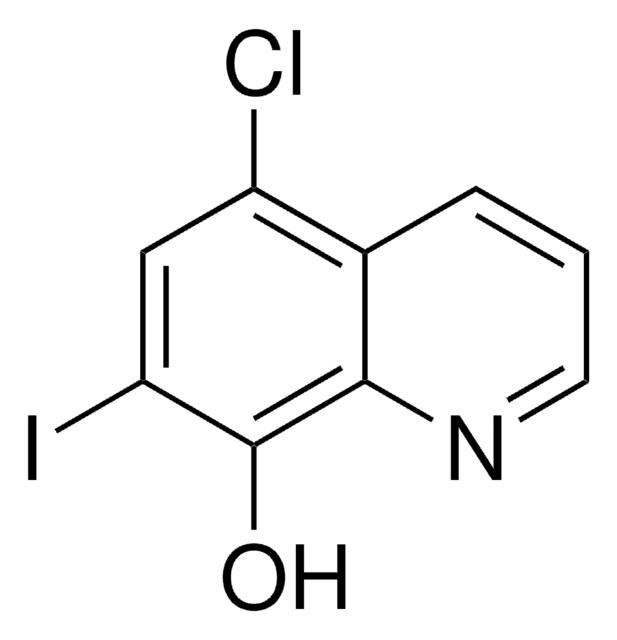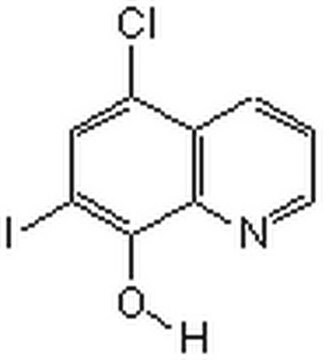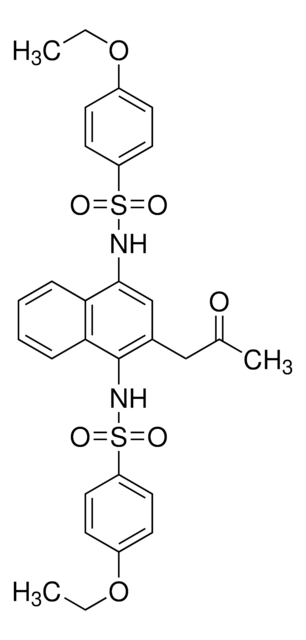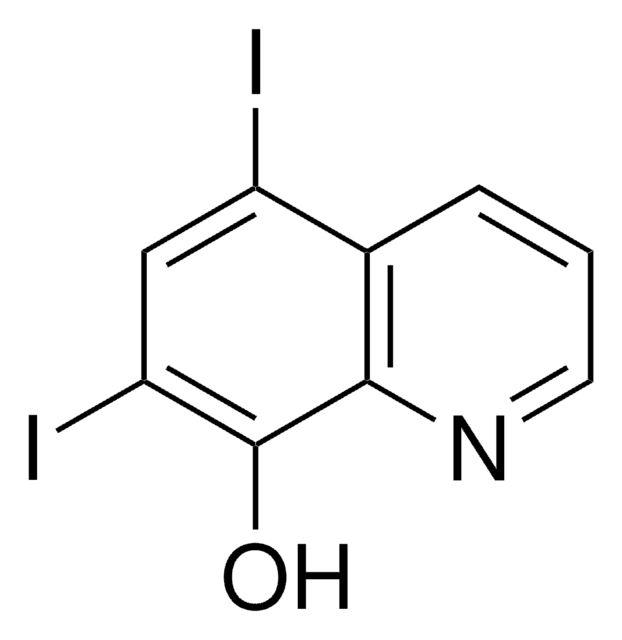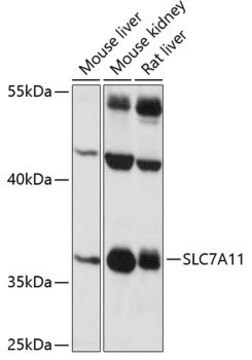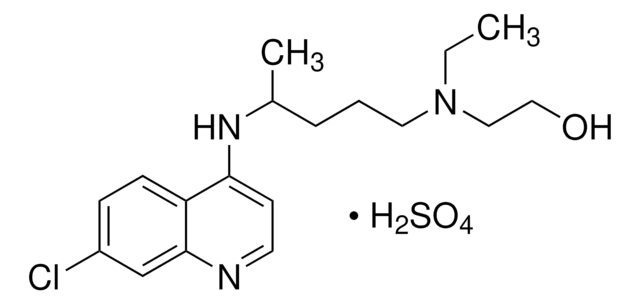おすすめの製品
グレード
pharmaceutical primary standard
APIファミリー
clioquinol
メーカー/製品名
EDQM
アプリケーション
pharmaceutical (small molecule)
フォーマット
neat
保管温度
2-8°C
SMILES記法
Oc1c(I)cc(Cl)c2cccnc12
InChI
1S/C9H5ClINO/c10-6-4-7(11)9(13)8-5(6)2-1-3-12-8/h1-4,13H
InChI Key
QCDFBFJGMNKBDO-UHFFFAOYSA-N
類似した製品をお探しですか? 訪問 製品比較ガイド
詳細
この製品は薬局方標準品です。発行元の薬局方により製造・供給されています。MSDSを含む製品情報などの詳しい情報は、発行元の薬局方のウェブサイトよりご確認ください。
アプリケーション
Clioquinol EP Reference standard, intended for use in laboratory tests only as specifically prescribed in the European Pharmacopoeia.
包装
The product is delivered as supplied by the issuing Pharmacopoeia. For the current unit quantity, please visit the EDQM reference substance catalogue.
その他情報
Sales restrictions may apply.
シグナルワード
Danger
危険有害性情報
危険有害性の分類
Acute Tox. 3 Oral - Eye Irrit. 2 - Skin Irrit. 2 - Skin Sens. 1
保管分類コード
6.1C - Combustible acute toxic Cat.3 / toxic compounds or compounds which causing chronic effects
WGK
WGK 3
適用法令
試験研究用途を考慮した関連法令を主に挙げております。化学物質以外については、一部の情報のみ提供しています。 製品を安全かつ合法的に使用することは、使用者の義務です。最新情報により修正される場合があります。WEBの反映には時間を要することがあるため、適宜SDSをご参照ください。
労働安全衛生法名称等を表示すべき危険物及び有害物
名称等を表示すべき危険物及び有害物
労働安全衛生法名称等を通知すべき危険物及び有害物
名称等を通知すべき危険物及び有害物
Jan Code
Y0000364-5MG:
Y0000364-1EA:
Y0000364:
最新バージョンのいずれかを選択してください:
Silvio R Bareggi et al.
CNS neuroscience & therapeutics, 18(1), 41-46 (2011-01-05)
Clioquinol was produced as a topical antiseptic and marketed as an oral intestinal amebicide in 1934, being used to treat a wide range of intestinal diseases. In the early 1970s, it was withdrawn from the market as an oral agent
Simon Melov
Trends in neurosciences, 25(3), 121-123 (2002-02-20)
Alzheimer's disease (AD) is a devastating age-related neurodegenerative disorder that has been intensively studied over the last several years. In vitro and in vivo studies have led to an understanding of some of the physico-chemical properties of amyloid, a well-characterized
T W Meade
British journal of preventive & social medicine, 29(3), 157-169 (1975-09-01)
Between about 1955 and 1970, some 100,000 Japanese were diagnosed as having subacute myelooptic neuropathy (SMON), a new disease characterized by abdominal and neurological manifestations, the former nearly always preceding the latter. Circumstantial evidence obtained in 1969-70 suggested that SMON
Peter J Crouch et al.
Journal of neurochemistry, 119(1), 220-230 (2011-07-30)
Impaired metal ion homeostasis causes synaptic dysfunction and treatments for Alzheimer's disease (AD) that target metal ions have therefore been developed. The leading compound in this class of therapeutic, PBT2, improved cognition in a clinical trial with AD patients. The
J Tateishi
Neuropathology : official journal of the Japanese Society of Neuropathology, 20 Suppl, S20-S24 (2000-10-19)
It remains a tragic event that some 10,000 individuals in Japan developed a unique neurologic disease, subacute myelo-optico-neuropathy (SMON). Many of the affected patients still suffer serious sequelae, such as dysesthesia and muscle weakness in the lower extremities, and loss
ライフサイエンス、有機合成、材料科学、クロマトグラフィー、分析など、あらゆる分野の研究に経験のあるメンバーがおります。.
製品に関するお問い合わせはこちら(テクニカルサービス)